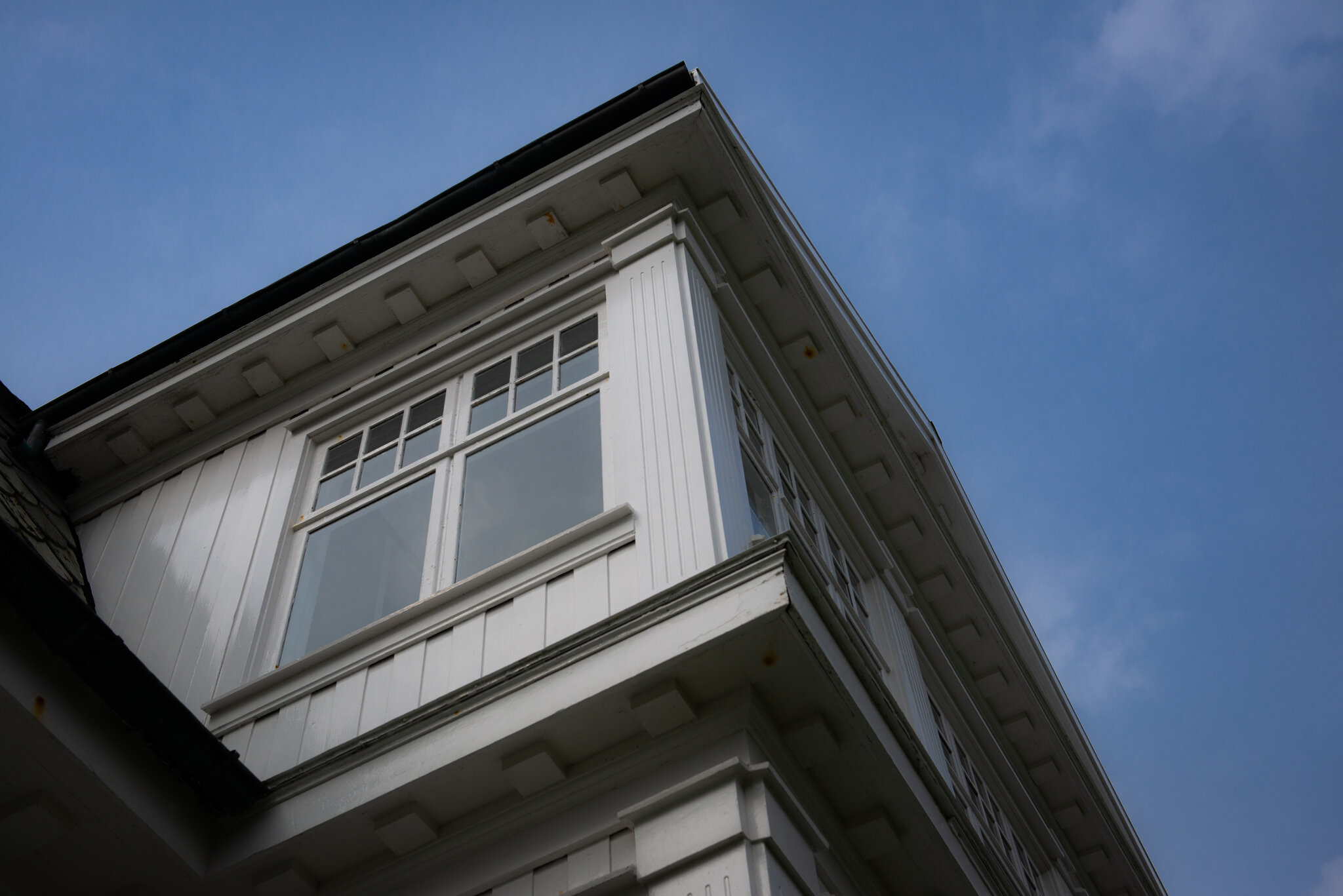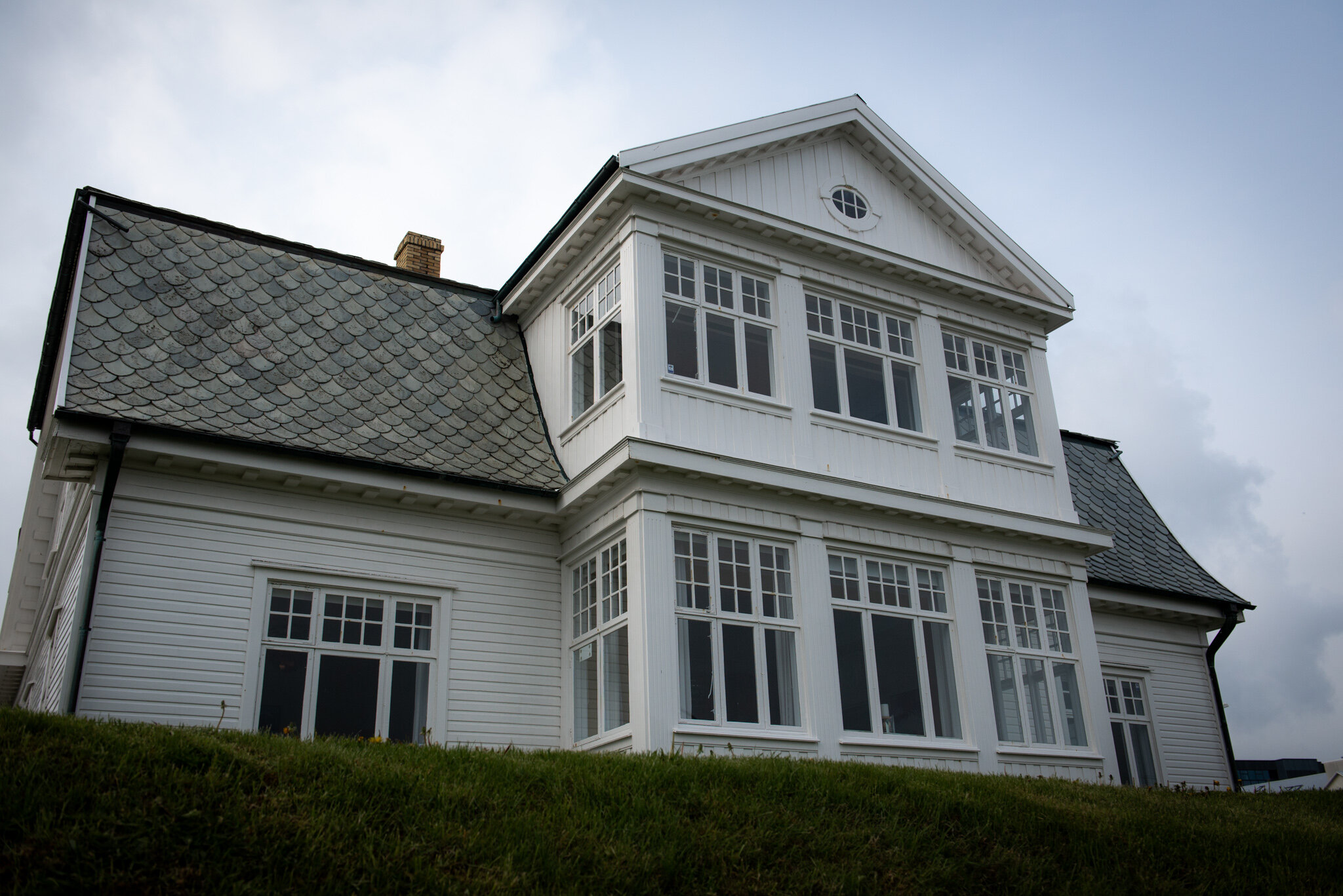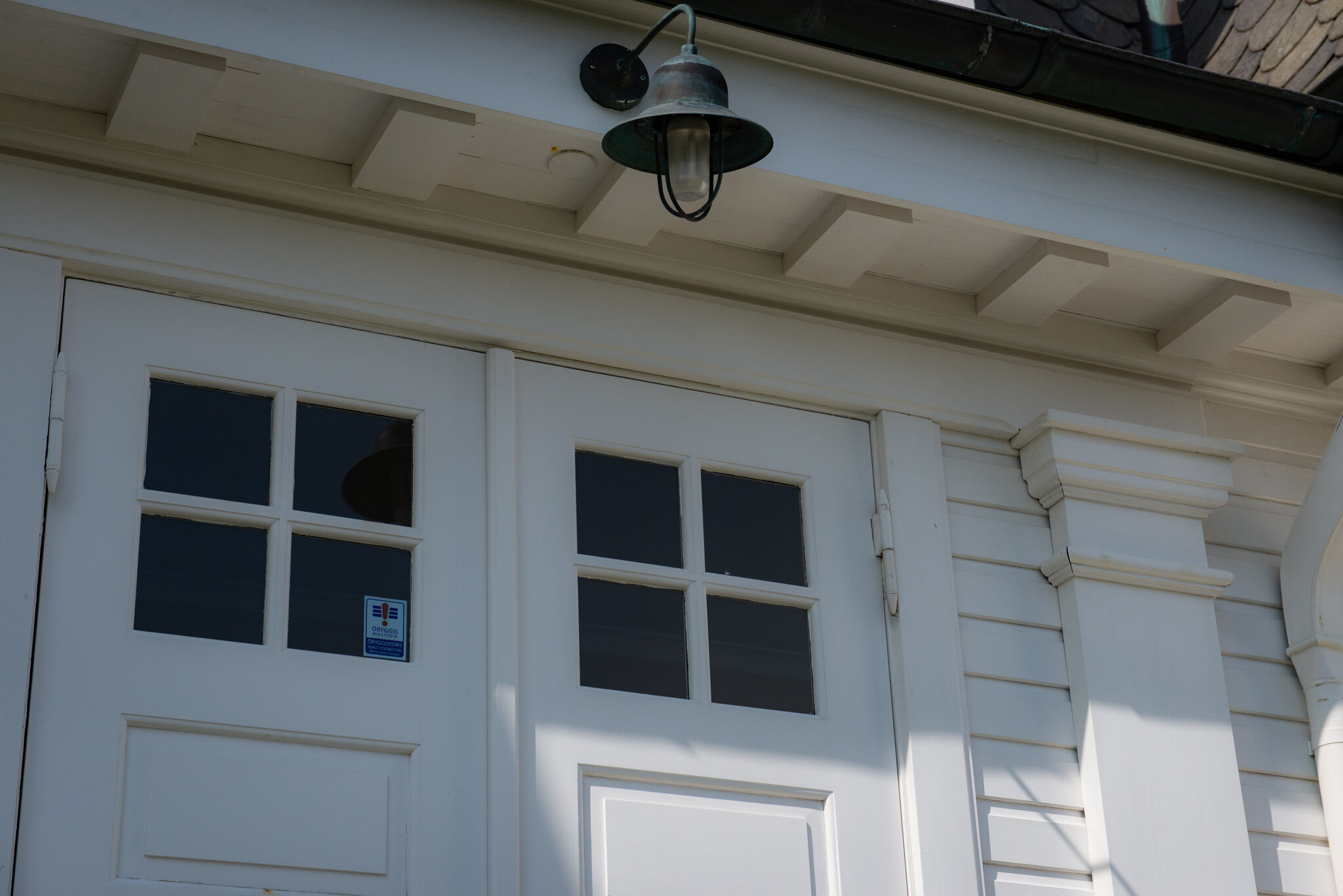Hofdi House
Hofdi House, Reykjavik, Iceland
An American Abroad
(Reykjavik, Iceland) - History is made in ordinary places.
In 1986, for their own philosophic, practical and political reasons, U.S. President Ronald Reagan and Soviet leader Mikhail Gorbachev were motivated to reach an agreement to reduce the nuclear weapons held by each country.
Reagan was at odds with himself. He had long advocated a policy of peace through strength, which meant building up a defense capability so formidable no country would ever consider threatening the United States, because winning such a conflict would be impossible. At the same time, it is said, he held a view that nuclear weapons were immoral and ideally should be eliminated from the world’s arsenal.
Gorbachev was facing the realization that heavy spending on defense was ruining his country’s economy and if the Soviet Union was going to succeed in the long run, he needed to do something to end the arms race with the United States. Perhaps he understood the path he was on would lead to the end of the Soviet Union, over the course of the next six years, but if he did, it is a vision he did not share with the world.
Reagan and Gorbachev had met before and had communicated in other ways about the big issues facing the two countries. It is always important to point out that during Reagan’s time in office, especially during his first term, the American press did not view him favorably. He was described as a cowboy and his “peace through strength” defense build-up was seen as reckless. There were strong doubts that Reagan had the intellectual capacity to negotiate one on one with Gorbachev. On a broader scale, during the 1980s, news coverage often reflected the very real perception among many Americans that nuclear war was possible.
In the fall of 1986, the dialogue between Reagan and Gorbachev led to a summit meeting in Reykjavik, Iceland. The meeting was not expected to produce final results, but was meant rather as a place to outline a plan that might lead to a general agreement on arms control in the future.
Reagan and Gorbachev ended up in a brainstorming session that nearly brought about a deal to eliminate all the nuclear weapons held by the U.S. and the U.S.S.R. by the year 2000. By the end of the summit meeting the deal fell apart over a disagreement on Reagan’s space based missile defense system that was meant to “render nuclear weapons obsolete.” Although the program was formally called the Strategic Defense Initiative, the news media and Reagan’s political opponents derisively referred to it as “Star Wars” in the same way today’s Republicans refer to the Affordable Care Act as Obamacare.
Historians see the meeting at Reykjavik not as a failure, but as an important step that would eventually lead to the end of the Cold War. Although news coverage at the time described the summit meeting as falling short, you can see in the photographs and the videotape of the event that the two main participants - Reagan and Gorbachev - felt they had achieved something. They were on to something. There was a path forward for both men and for both countries that would eventually lead to success. Their place in history as the two leaders who ended the Cold War was very much defined by events in Reykjavik.
The Reykjavik meeting was held at Hofdi House. During my visit to Iceland I made a point of visiting. I was not alone. There are no daily crowds gathering to stand in line and take tours, but once or twice an hour someone will park their car, walk the grounds, take a few pictures, pause and reflect, and leave. I imagined something quite different than what I found.
As the original location of the French Consulate, I expected it to be in a picturesque, but hard to get to location. It is well maintained and its location is picturesque, but it is not hard to get to and if you did not know the history of the place you might drive by without noticing, or think the building looks out of place on the edge of the city’s main business district.
Hofdi House is first off a large house with very little ornamentation when compared to most foreign embassy buildings. It was designed and built in Norway and shipped in pieces, like a Sears catalogue house, to its current location. That was in 1909. Back then, Reykjavik was a much smaller city and you could argue the house was placed on prime real estate, just a few hundred yards from the coastline with an expansive view of the North Atlantic and the mountains of southwest Iceland.
After it was used as an official building of the French government, it was held by a series of private owners who used it as a family home for nearly fifty years. The city of Reykjavik bought Hofdi House, renovated it, and has used it for special occasions ever since. The ownership history explains why such a small building sits alone, on a small mound overlooking the sea, a main highway running in front of it, and mid-size office buildings and shopping centers surrounding it.
It makes sense that when Reagan and Gorbachev decided to meet in October of 1986, in a country halfway between Washington, D.C. and Moscow, they would pick Iceland, and when it came to where in Iceland, Hofdi House in Reykjavik was the obvious choice. The small white building is stately. On television, the seaside location looks exclusive, but it is all very ordinary except for what happened there.
In the years following the Reagan-Gorbachev summit, Reykjavik experienced a boom in tourism that continued to grow each year until the start of the Covid pandemic in 2020. Only now is Iceland’s tourist business beginning to rebound to pre-pandemic levels.
History can happen anywhere. In this ordinary place, a kit home on the Icelandic coast, two of the most powerful men in the world almost agreed to eliminate their nations’ stock of nuclear weapons. It is widely observed by experts that the Reykjavik summit changed the post World War II political order and continues to influence everything that has happened since, including current U.S. - Russian relations.



